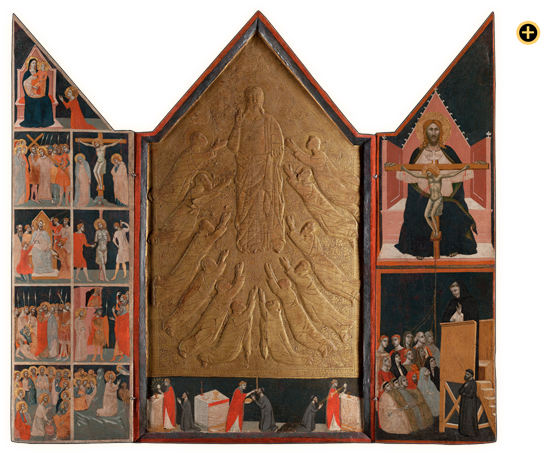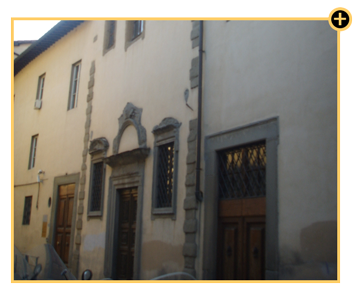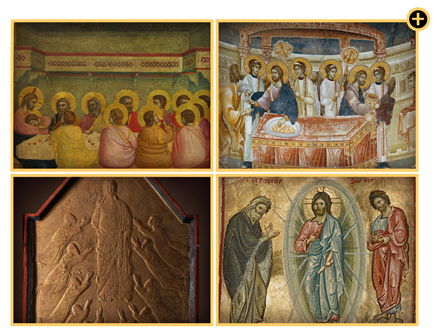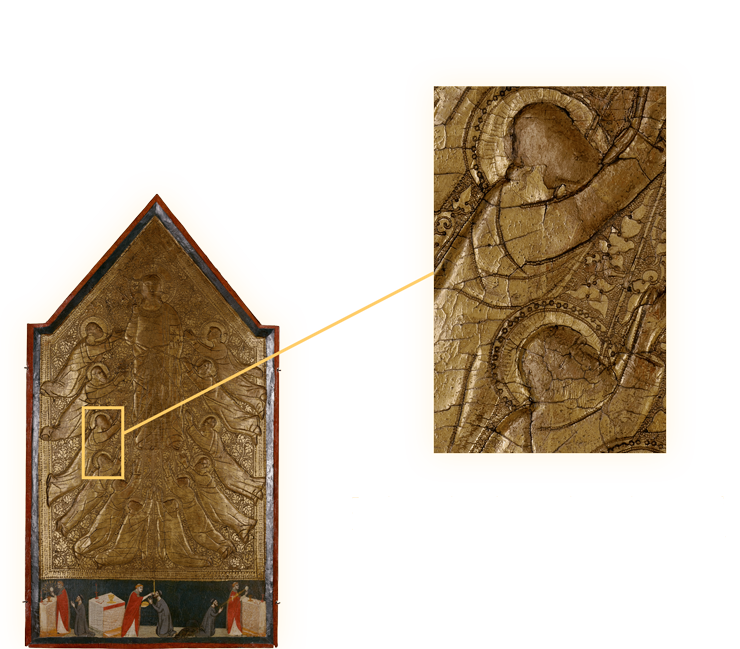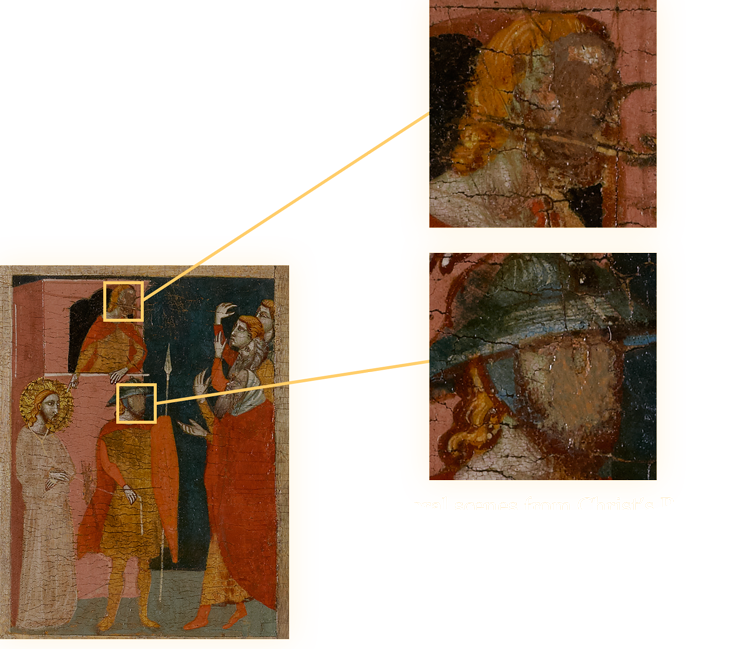
A Sacred Painting
Designed for Prayer


Portable with hinged side panels yet relatively large in size, this painting was probably designed for the altar of a small chapel. The central panel, in relief and gilded, represents Christ nourishing the apostles.
Complementing it are painted scenes from the Passion of Christ and the life of the patron, the Blessed Chiarito del Voglia, a holy layman. The painting's distinctive iconography links it to the Mass.
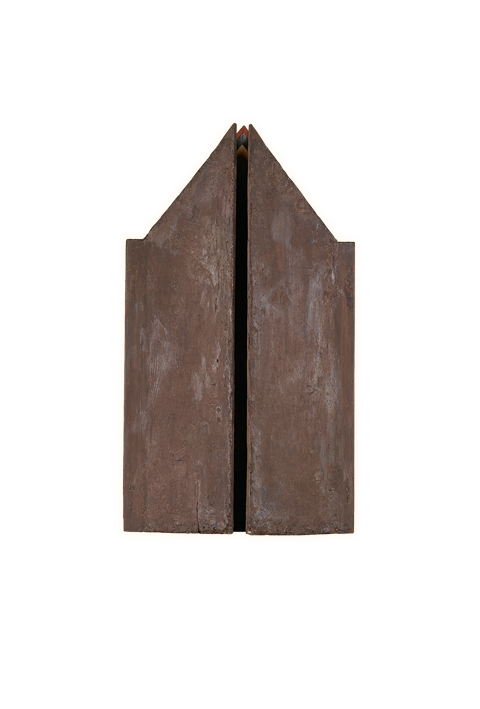



A Sacred Painting
Who was Chiarito?


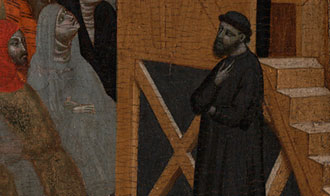
The wealthy layman Chiarito del Voglia devoted himself to charitable works after having a vision of the Florentine bishop Saint Zenobius while tending to his tomb. Chiarito chose a pious life and worked in several monasteries. He and his wife took vows of chastity. They focused on improving the lives of nuns and poor women.
Chiarito founded Santa Maria Regina Coeli, an Augustinian convent, in 1343. Evidence suggests that this painting was once located in the convent's choir reserved for the nuns.


Spiritual Nourishment
Communion of the Apostles


In the Chiarito Tabernacle's Communion of the Apostles, Christ's disciples take nourishment from tubes that emanate from his navel. It is implied that Chiarito joins them symbolically because he also partakes from a subordinate position at the base of the central panel.
The central panel's iconography is extremely unusual. Pacino may have drawn upon multiple visual traditions in order to convey the miraculous and timeless qualities of the event.


Color and Tactility
Azure Skies


The Chiarito Tabernacle appears quite different today than it must have in the 1340s when Pacino created it. By comparing some colors with better-preserved examples from other panel paintings and manuscripts by the artist, the altarpiece's original appearance can be partially reconstructed.


Color and Tactility
An Unusual Technique


Pacino employed a gilded-gesso technique called pastiglia to shape the figures of Christ and the apostles in the central panel. Gesso, a whitish, mineral-based material typically used by painters to prepare surfaces for paint, was applied in layers, then sanded, incised, and covered in gold leaf.




Scenes from an Altarpiece
Narrative Structure


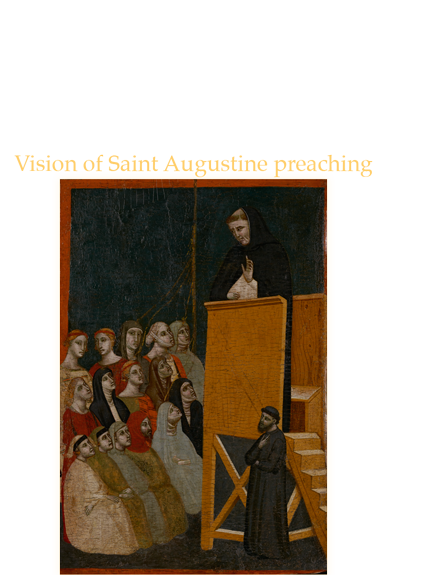
Although Saint Augustine had lived a thousand years earlier, in this vision he preaches to Chiarito and a gathering of people, as Christ's blood flows down onto the nuns in the group.

Although Saint Augustine had lived a thousand years earlier, in this vision he preaches to Chiarito and a gathering of people, as Christ's blood flows down onto the nuns in the group.
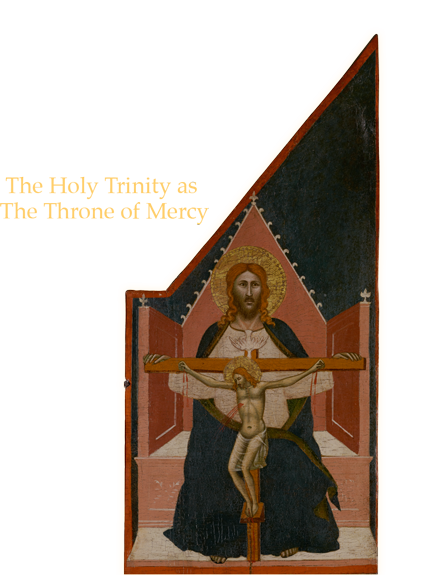
God the Father holds the crucified Christ, as the dove of the Holy Spirit hovers above him.
Chiarito's spiritual visions take place as he kneels for Communion. At left, he sees the Host sprout shafts of wheat; in the center, he receives the Host and participates in the Communion of the Apostles (in the panel above); at right, he sees the Host at the moment it miraculously becomes Christ's body.

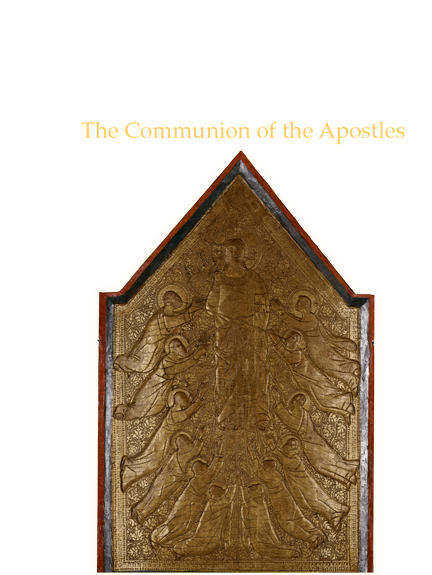
The apostles receive nourishment from Christ. The sculptural and gilded qualities of the panel allude to the physical yet transcendent aspects of this scene.

This cycle begins with Christ washing the apostles' feet (bottom left) and ends with his Crucifixion (top right).
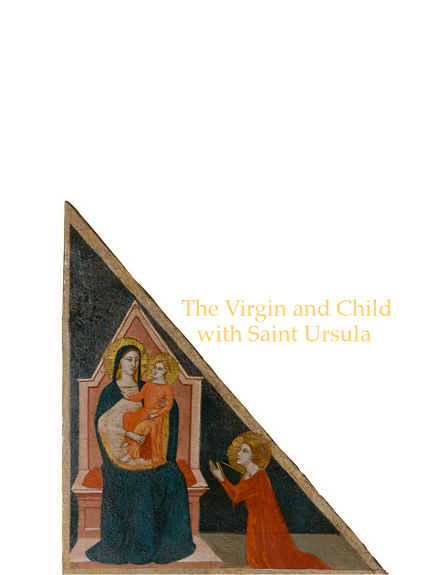
Saint Ursula, a virgin martyr shot in the throat with an arrow, would have been a role model for the convent's nuns, as would the Virgin Mary.


Scenes from an Altarpiece
Innovative Elements


A master of visual narrative, the artist Pacino di Bonaguida skillfully orchestrated the tabernacle's iconography through the strategic placement of connected or interlinked scenes.
For example, Christ's blood flows from top to bottom between sections of the right panel, echoing the golden lines within the central image that emanate from his navel and connect to the apostles and Chiarito.

